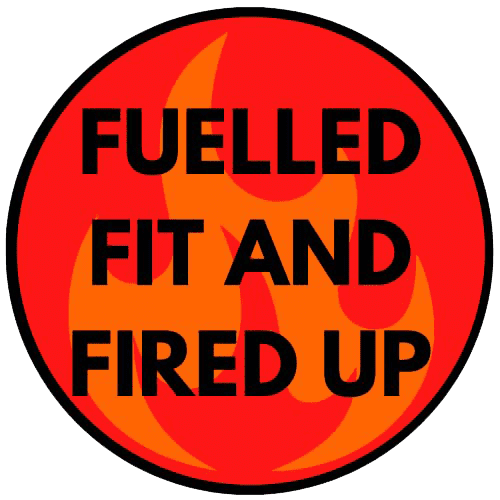
The Price Is Right
Just like the legendary show "The Price is Right," where contestants anxiously guessed the cost of fabulous prizes, your business, too, faces the thrilling challenge of getting your pricing just right.
So, as the late Bob Barker and Bruce Forsyth famously shouted, "Come on down!", and let’s first explore the breaking news in the world of Hospitality.
The Stonegate Story
In the past week, the UK hospitality industry has been buzzing with news of Stonegate Group's, apparent, ‘innovative’ approach to pricing, marked by the introduction of "dynamic pricing" in over 800 of their venues. This bold strategy involves charging customers more during peak times, like weekends and major sporting events, to offset the rising costs of operation. Citing the impact of licensing requirements, such as door security and plastic glasses, along with extra staff and glass washing as the drivers for change, it will be interesting to track the fallout from this bold decision.
But what does this mean for the industry and its customers? And are they considerations you need to be making in your business?
Let's dive straight in.
👍 The Pros of Dynamic Pricing 👍
Cost Management: Stonegate's move acknowledges the very real challenges of cost inflation, wage pressures, and additional operational expenses during peak hours. Dynamic pricing allows them to efficiently allocate resources and manage expenses during these high-demand periods, ensuring sustainability.
Enhanced Customer Experience: With additional staff, better security, and cleaner facilities, customers can enjoy a safer and more pleasant atmosphere during busy periods. This can lead to increased customer satisfaction and loyalty.
Flexibility: Dynamic pricing enables pubs to offer promotions and discounts during off-peak hours, ensuring that customers can still enjoy great value for money when demand is lower.
👎 The Cons of Dynamic Pricing 👎
Price Uncertainty: Some customers may find it unsettling not knowing the exact cost of their drinks beforehand, making it a bit of a gamble. This uncertainty could deter them from frequenting the establishment.
Customer Relations: Transparency is key to maintaining strong customer relationships. While the reasons for the price hikes are clearly stated, customers might still feel a bit uncomfortable with fluctuating prices.
Potential Backlash: Public perception matters. The introduction of dynamic pricing could lead to a backlash on social media and even impact brand loyalty if not handled delicately.
📊 Pricing Strategies: More than Just Numbers 📊
When considering pricing strategies, businesses must take a holistic approach. Factors like operating costs, market demand, and customer value perception all play a role. Dynamic pricing is just one tool in the toolkit of revenue management.
Dynamic Pricing: Dynamic pricing, also known as demand-based pricing, is a strategy where businesses adjust the prices of their products or services in real time based on various factors, including demand, supply, and other market conditions. It's like a virtual seesaw, with prices going up during periods of high demand and down during less busy times. This approach allows businesses to optimise revenue and resource allocation efficiently.
Airlines often use dynamic pricing, with ticket prices increasing as the departure date approaches and seats fill up and decreasing during off-peak times to attract budget-conscious travellers.
Surge Pricing: Surge pricing is a specific type of dynamic pricing that typically applies to on-demand services like ridesharing and food delivery. When demand for these services suddenly spikes, prices increase to incentivise more drivers or delivery personnel to participate, ensuring that customers can still get the service they need even during peak times.
You might have experienced surge pricing when ordering a ride during rush hour or on New Year's Eve, where the fare increases to encourage more drivers to be on the road.
These pricing strategies aim to balance supply and demand dynamically, ensuring that businesses can meet customer needs while also maximising their revenue. While dynamic pricing is more comprehensive and versatile, surge pricing is more immediate and reactive, often triggered by sudden demand surges.
Cost-Based Pricing: Cost-based pricing is a straightforward approach where a business sets the price of its product or service by calculating the total cost of production, including materials, labour, and overhead expenses, and then adding a desired profit margin. This method ensures that the business covers its costs and generates a predetermined level of profit.
Cost-Plus Pricing: Cost-plus pricing is a specific form of cost-based pricing where a business determines the cost of production and then adds a markup or profit margin. This margin can be a fixed percentage or a specific amount. It's a practical way to ensure profitability while remaining competitive.
Competitor-Based Pricing: Competitor-based pricing involves setting prices based on the pricing strategies and practices of competitors in the same market. This approach helps a business remain competitive by aligning its prices with those of similar products or services in the industry. It can be used both to undercut competitors or position products as premium offerings.
These pricing strategies provide different ways for businesses to determine the prices of their products or services. Cost-based pricing ensures costs are covered, cost-plus pricing adds a profit margin, and competitor-based pricing helps a business stay competitive in the market.
It's important for businesses to strike a balance between maximising profits and maintaining customer trust. The hospitality industry, as well as sectors like tourism, have long employed dynamic pricing or similar strategies during peak seasons, so Stonegate's move is not entirely unprecedented.
What are your thoughts on dynamic pricing in the pub industry?
What considerations are you making when pricing your products and services?
I’d love to know.
Have a brilliant week!
Dave Rogers, Chief Business Explorer, Fuelled Fit and Fired Up
At Fuelled Fit and Fired Up, I use my curiosity to help you build a better business.
Think of me as the person who unleashes your power.
Looking for a speaker who thinks a little differently? Let’s talk.
Why not contact me at info@fuelledfitandfiredup.com to find out more?
And don’t forget to subscribe to my YouTube channel @thebusinessexplorers, where I share ideas on how you can create your recipe for business success.



